
April 2008
- Super-Bugs and Other Emerging Hazards
- Improved Metrics Can Boost Performance
- Safely Managing Nuclear Remediation Projects
- An End to Crushing Defeats
Click here to subscribe.
Cover Story
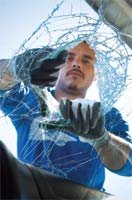
By Linda J. Sherrard
It was interesting and horrifying to watch at the same time: a dedicated worker who, at first glance, was cleaning his work PPE. On closer examination, he had a large bucket of tepid water with a wide range of gloves being dunked and hung up to dry. These gloves had handled raw sewage and were moldy from improper storage after chemicals use or animal blood.
Features
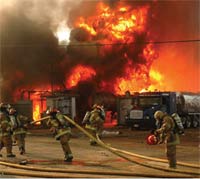
By Tim Overton, Scott Berger
The BP US Refineries Independent Safety Review Panel (“Baker Panel”) and the U.S. Chemical Safety and Hazard Investigation Board both recommended improved industry-wide process safety metrics in their final reports dealing with the 2005 explosion at the BP Texas City, Texas, refinery. This has also been a subject of frequent discussions among process safety organizations such as the Center for Chemical Process Safety (CCPS), as well as magazine articles and other forums.
By Jeff Bowers
For the better part of 30 years, I have been involved in a variety of nuclearrelated projects. This is what I know: For the most part, if you give the craft accurate drawings, the tools they need to perform their work, and clear direction, they will perform for you every time. If your staff has a well-defined scope, open communication, and management support, they will perform, as well. If you are doing all of these things and still find project success elusive, what’s missing? I have found that management credibility in regard to safety is the key.
By Donald R. Groover, CIH, CSP, Jim Spigener
Safety professionals have long been the mainstay of EHS performance. Even as methodologies evolve, new tools emerge, and thinking changes, organizations have counted on these practitioners to guide the core of EHS functioning. Still, changes in the business landscape are beginning to change that role. Businesses have moved to flatter organizational models, leaders have less discretionary time, and competition is increasingly global.
By Donald F. Groce
It seems that each year, new hazards in the home, workplace, and community are identified that endanger our health and well-being. Bloodborne pathogens such as bird flu and the mutant bacterial staph, MRSA, continue to threaten our health. New toxicity hazards have been discovered in chemicals that have been used for decades.

By Fred Elliott
OSHA’s recent guidance document for protecting against the skin ailments related to portland cement exposure was a handy reminder that impact hazards are not the only one to be addressed by your foot protection program.
By Julie Nussbaum
As most safety people know, ergonomics is the science of fitting job tasks, workstations, and equipment to individual workers. Ergonomics looks at all aspects of a job, from the design of tools, tasks, and equipment to adequate lighting and how the overall workstation is set up. And its principles can be applied everywhere—in the workplace, at home, and to recreational activities.
By Don Frank
When performing an inspection at a business, you should inspect its fire extinguishers. Looking at the psi gauge to see whether the arrow is in the green and inspecting the tag to determine whether it is current or the extinguisher needs to be inspected will tell you some things about it, but there is a bit more you should know.
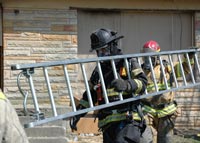
Two important tradeshows are happening this month. First, the 2008 Fire Department Instructors Conference takes place in Indianapolis April 7-12. About 28,000 firefighters are expected to attend the 80-year-old event, billed as the world's largest firefighter training conference and exhibition.
Then, from April 25 to May 1, the American Association of Occupational Health Nurses will hold its 2008 AAOHN Symposium & Expo in Salt Lake City. This conference is a golden opportunity for occupational nurses to learn and network with fellow colleagues.
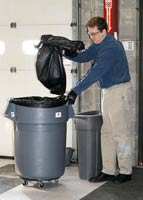
By Jerry Laws
Recent studies show non-hospital-based workers have relatively high exposure rates to bloodborne pathogens. Vonachen Services Inc., a janitorial services contracting company with about 125 employees working in health care facilities, has built its BBP success through hands-on supervision and a strong training program.
Departments
By Robert Pater
How can you triumph over difficult challenges, even when your company has dual dangers of intensively physical work and an aging workforce?
By Harry Nolan, Ph.D.
The best crisis plan in the world is useless if it sits on a shelf. Your people must be ready to put it into action on a moment’s notice. That takes communication and leadership.
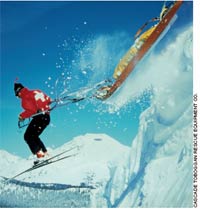
By Ronnie Rittenberry
Injury-free days on the slopes are few and far between. To some extent, mishaps just go with the terrain when millions of skiers per season, people of all ages and skill levels, are turned loose on snow and ice at high altitudes with boards strapped to their feet. It doesn’t help that snow has a tendency to shift or that trail conditions can change hourly.